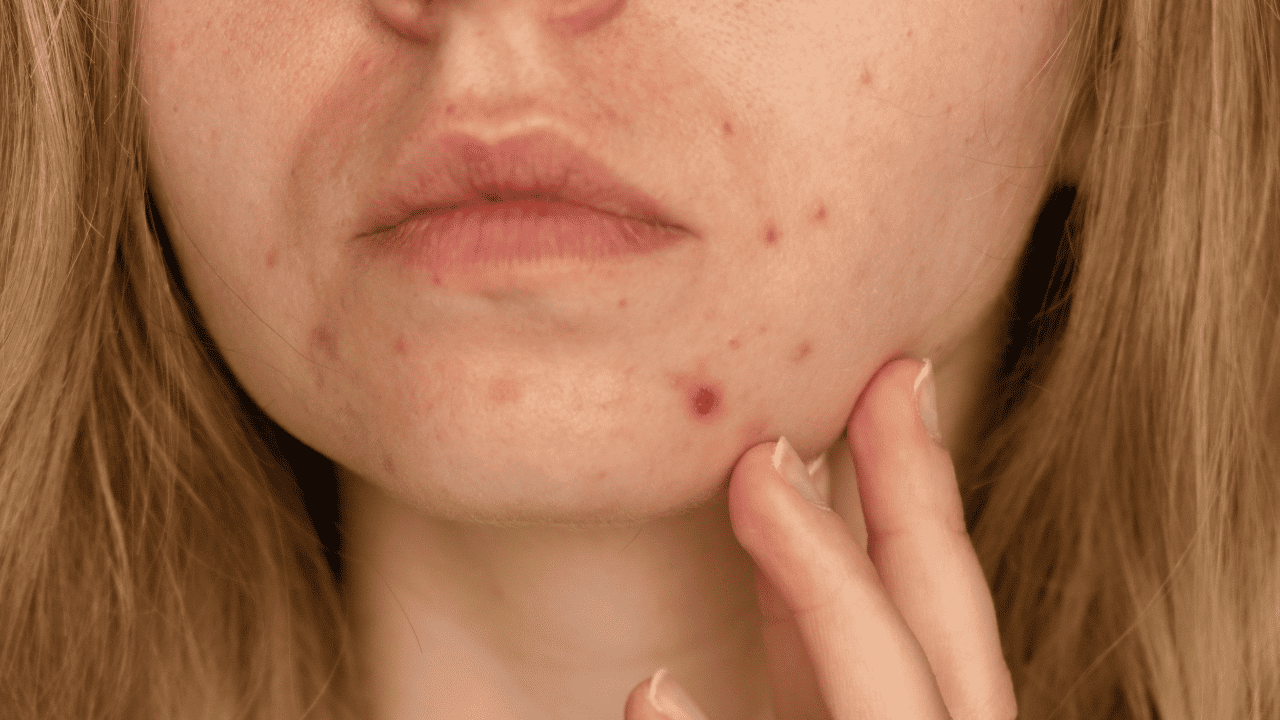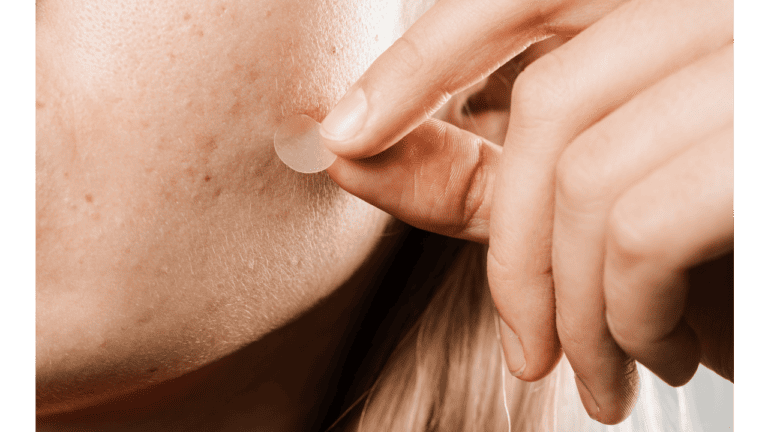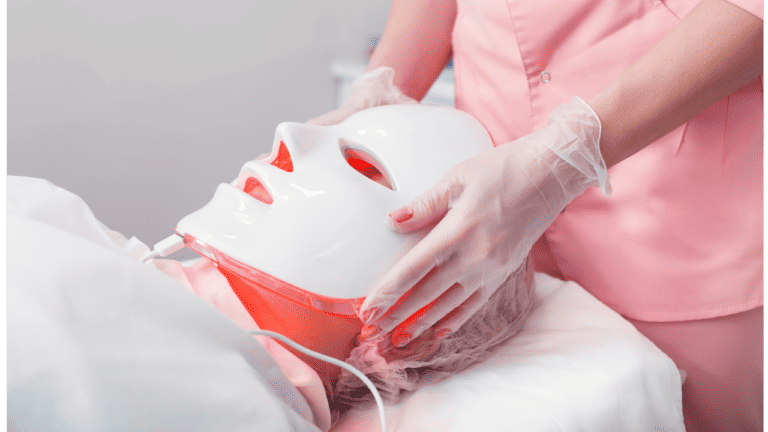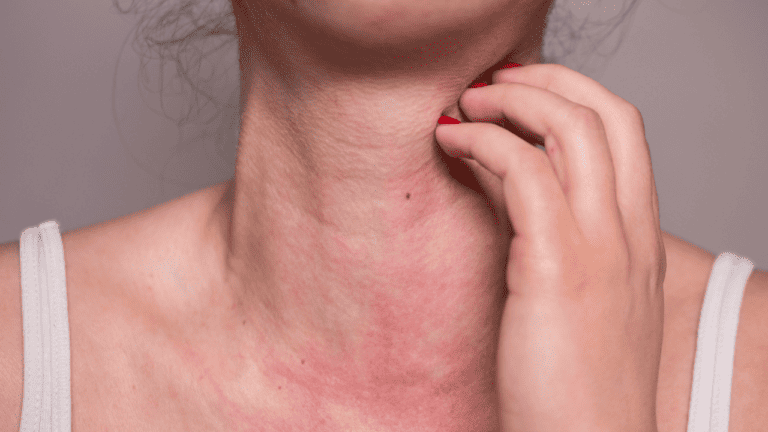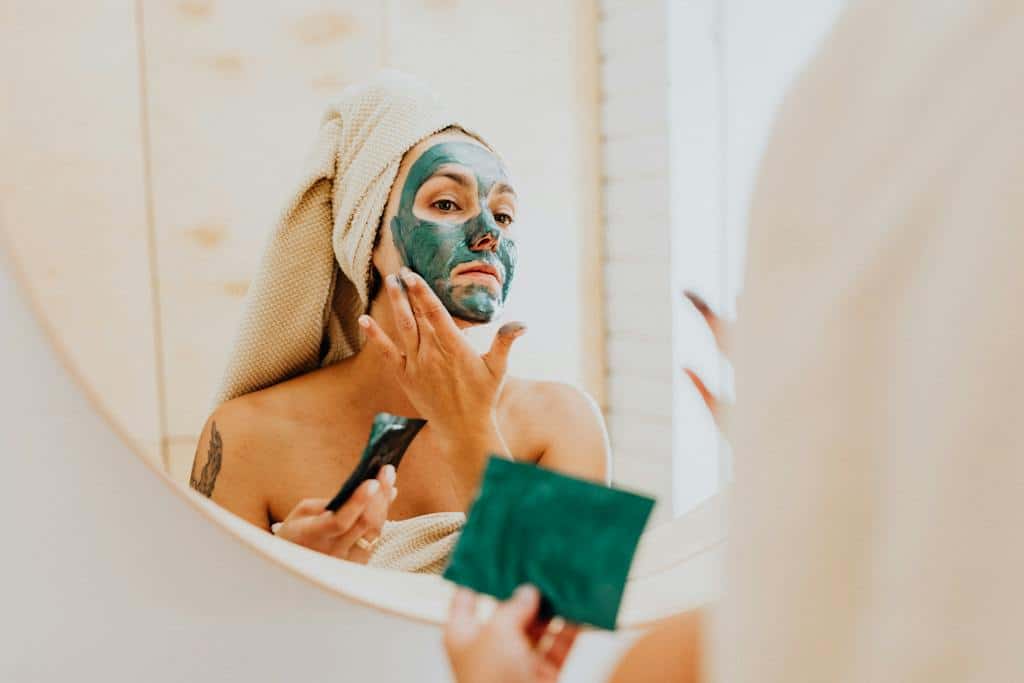Pimple patches are a popular solution for treating acne. They work by absorbing oil and pus from the pimple, which helps to reduce inflammation and redness. However, some people may experience red marks on their skin after using pimple patches. In this article, we will explore the possible causes of these marks and how to prevent or treat them.
One possible cause of red marks after using pimple patches is an allergic reaction. Pimple patches are made from a variety of materials, including hydrocolloid, which can cause an allergic reaction in some people. If you have sensitive skin, it is important to test the patch on a small area of your skin before using it on a larger area. If you experience redness, itching, or swelling, you may be allergic to the patch.
Another possible cause of red marks is skin irritation. Pimple patches work by drying out the skin, which can cause irritation if left on for too long. If you leave the patch on for more than 24 hours, it can cause the skin to become dry and flaky, which can lead to redness and irritation. It is important to follow the instructions on the patch and remove it after the recommended time to prevent skin irritation.
Key Takeaways
- Red marks after using pimple patches may be caused by an allergic reaction or skin irritation.
- To prevent red marks, test the patch on a small area of skin before using it on a larger area and remove it after the recommended time.
- If you experience persistent redness or irritation, consult a dermatologist for further treatment options.
Understanding how Pimple Patches could cause red marks
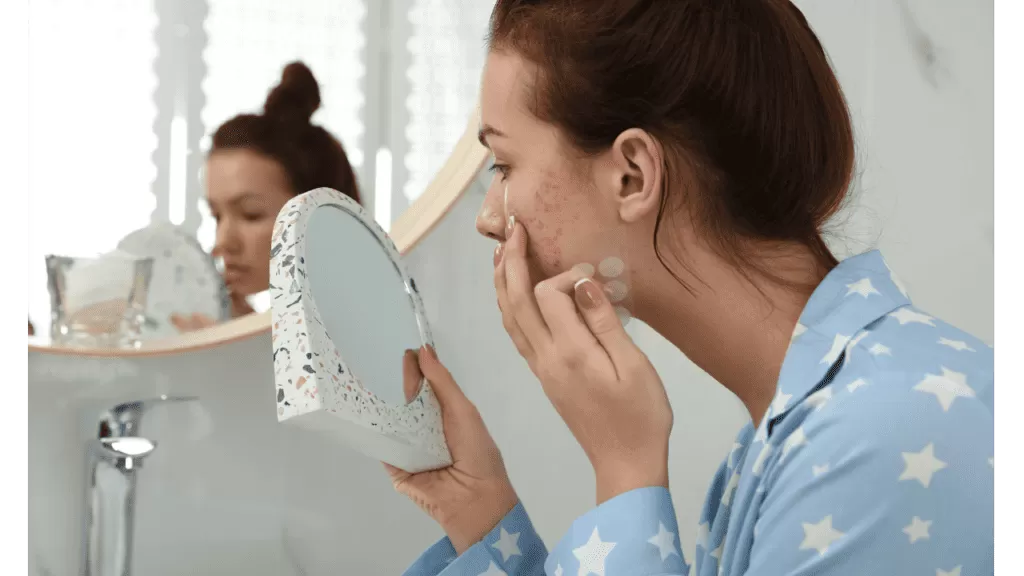
Pimple patches are small adhesive stickers that are placed over acne blemishes to help treat and heal them. These patches come in different shapes and sizes and are designed to be worn for several hours or overnight. They are a popular way to treat acne because they are easy to use and can be effective at reducing the size and redness of pimples.
Types of Pimple Patches
There are two main types of pimple patches: hydrocolloid patches and acne patches. Hydrocolloid patches are made from a gel-like material that absorbs excess fluid from the pimple, while acne patches are infused with acne-fighting ingredients like salicylic acid or tea tree oil.
Hydrocolloid patches are the most popular type of pimple patch. They work by creating a moist environment around the pimple, which helps to speed up the healing process. These patches are also effective at reducing inflammation and preventing the pimple from getting worse.
Acne patches, on the other hand, are designed to treat acne by delivering active ingredients directly to the pimple. These patches can be effective at reducing the size and redness of pimples, but they may also dry out the skin.
How Pimple Patches Work
Pimple patches work by creating a barrier between the pimple and the environment. This barrier helps to protect the pimple from further irritation and infection, while also allowing the skin to breathe and heal.
Hydrocolloid patches work by absorbing excess fluid from the pimple. This helps to reduce inflammation and speed up the healing process. These patches are also effective at preventing scarring and hyperpigmentation.
Acne patches work by delivering active ingredients like salicylic acid or tea tree oil directly to the pimple. These ingredients help to unclog pores and reduce inflammation, which can help to speed up the healing process.
However, if left on for too long, pimple patches can dry out the skin and cause irritation. It is important to follow the instructions carefully and remove the patch after the recommended amount of time to avoid any adverse reactions.
In conclusion, pimple patches can be an effective way to treat acne. However, it is important to choose the right type of patch and follow the instructions carefully to avoid any adverse reactions.
Causes of Red Marks
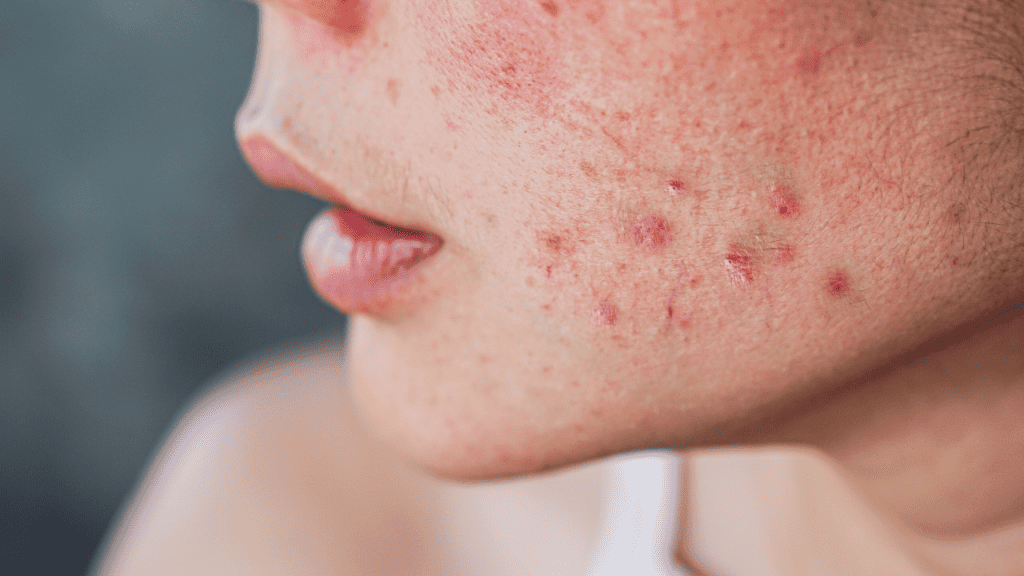
Pimple patches are highly effective in treating acne, but they can sometimes leave behind red marks. There are several reasons why this may happen.
Allergic Reactions
One possible cause of red marks left behind by pimple patches is an allergic reaction. Some people may be allergic to the materials used in the patch, such as the adhesive or the hydrocolloid material. This can cause the skin to become red, itchy, and inflamed. If you suspect that you may be allergic to pimple patches, it is best to stop using them and consult a dermatologist.
Extended Wear and Skin Dryness
Another possible cause of red marks left behind by pimple patches is extended wear and skin dryness. Hydrocolloid patches work by drawing out the impurities from the pimple, which can leave the skin dry and irritated. If the patch is left on for too long, it can cause the skin to become red and inflamed. It is important to follow the instructions on the packaging and remove the patch after the recommended time period.
Irritation and Inflammation
Lastly, irritation and inflammation can also cause red marks left behind by pimple patches. This can happen if the patch is not applied properly or if it is removed too aggressively. It can also occur if the skin is sensitive and reacts to the hydrocolloid material. To avoid irritation and inflammation, make sure to apply the patch gently and remove it carefully.
In conclusion, red marks left behind by pimple patches can be caused by allergic reactions, extended wear and skin dryness, and irritation and inflammation. It is important to identify the cause of the red marks and take appropriate action to prevent them from occurring in the future.
Skin Reactions and Healing
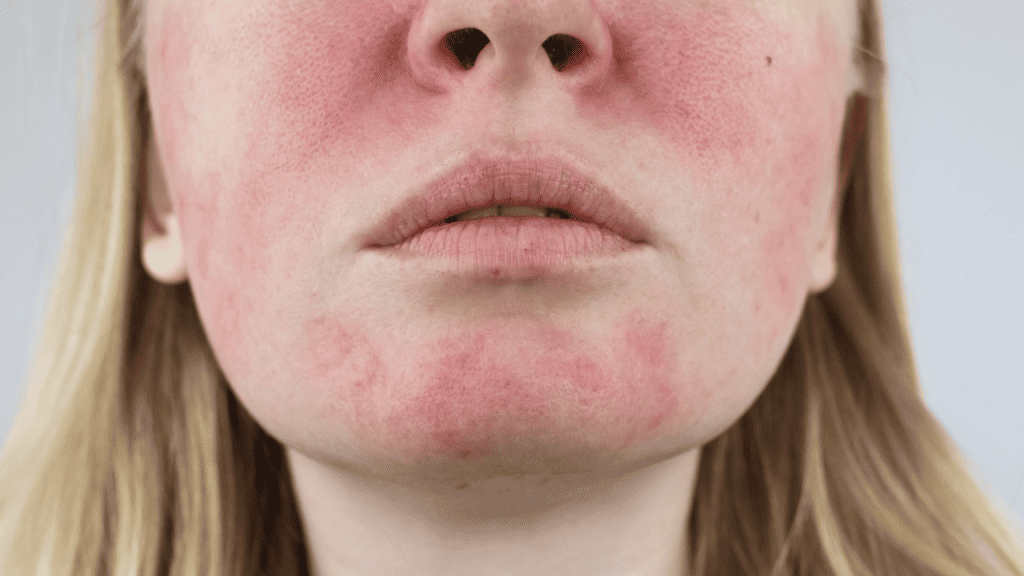
Pimple patches are a popular solution for treating acne. However, some people may experience skin reactions after using them. In this section, we’ll discuss the two common types of skin reactions – post-inflammatory erythema and post-inflammatory hyperpigmentation – and how to heal them.
Post-Inflammatory Erythema
Post-inflammatory erythema (PIE) is a type of skin discoloration that appears as red or pink marks on the skin. PIE occurs when the skin cells become inflamed due to trauma or injury. In the case of pimple patches, PIE can occur due to an allergic reaction or if the patch is left on for too long.
To heal PIE, it’s important to soothe the skin and reduce inflammation. Applying a cold compress or aloe vera gel can help reduce redness and inflammation. It’s also important to avoid picking at the affected area as this can worsen the condition.
Post-Inflammatory Hyperpigmentation
Post-inflammatory hyperpigmentation (PIH) is a type of skin discoloration that appears as dark marks on the skin. PIH occurs when the skin produces too much melanin in response to inflammation. In the case of pimple patches, PIH can occur if the patch is left on for too long and dries out the skin.
To heal PIH, it’s important to promote skin healing and collagen production. This can be done by using products that contain vitamin C or retinoids. These ingredients can help promote skin cell turnover and reduce the appearance of dark marks. It’s also important to protect the affected area from the sun as UV rays can worsen PIH.
In conclusion, pimple patches can cause skin reactions such as post-inflammatory erythema and post-inflammatory hyperpigmentation. It’s important to take steps to soothe the skin and promote healing to reduce the appearance of these skin discolorations.
Preventing and Treating Skin Marks

Pimple patches are a popular solution for treating acne and preventing further breakouts. However, sometimes these patches can leave behind a red mark on the skin. Here are some tips to prevent and treat skin marks caused by pimple patches.
Proper Pimple Patch Usage
To prevent skin marks from pimple patches, it’s important to use them properly. Make sure to clean and dry the affected area before applying the patch. Avoid leaving the patch on for too long, as this can cause irritation. Follow the instructions on the packaging for the recommended wear time.
Skincare Aftercare
After removing the pimple patch, it’s important to take care of the skin to prevent further irritation and reduce the appearance of any marks. Here are some tips for skincare aftercare:
- Cleanse the skin gently with a mild cleanser to remove any residue from the patch.
- Apply a gentle moisturizer to hydrate the skin and promote healing.
- Avoid picking or scratching at the affected area, as this can cause further damage and delay healing.
- Consider using products with ingredients like aloe vera or vitamin E, which can help soothe and heal the skin.
It’s important to keep the affected area in a moist environment to promote healing and prevent scarring. However, if the skin is too moist, it can also cause irritation. Make sure to strike a balance between keeping the skin hydrated and allowing it to breathe.
If the skin mark persists or becomes more severe, it’s important to seek medical advice from a dermatologist or other healthcare professional. They can provide personalized advice and treatment options based on your individual needs.
When to Consult a Dermatologist
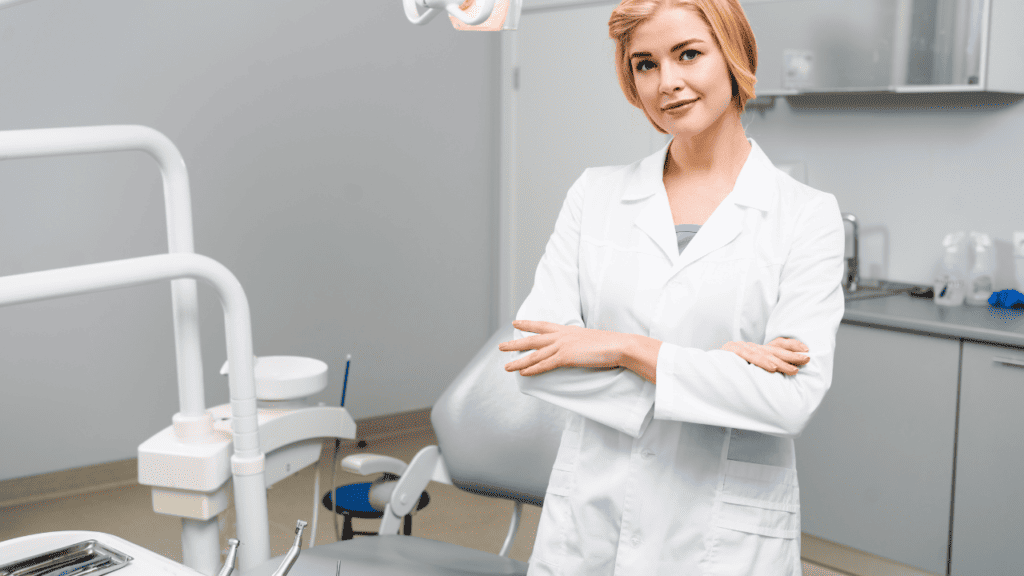
If you have been using pimple patches and notice that they are leaving red marks on your face, it may be time to consult a dermatologist. While pimple patches are generally safe to use, some people may be allergic to the materials used in the patch. If you notice any signs of an allergic reaction, such as redness, itching, or swelling, you should stop using the patches and consult a dermatologist.
In addition, if you have been using pimple patches for an extended period of time and notice that they are drying out your skin or causing irritation, it may be time to seek medical advice. A dermatologist can help you determine the best course of action to take to prevent further damage to your skin.
If you have any pre-existing skin conditions or are taking any medications that may affect your skin, it is especially important to consult a dermatologist before using pimple patches. They can help you determine if the patches are safe to use and provide you with advice on how to best care for your skin.
Overall, if you are experiencing any negative side effects from using pimple patches, it is important to consult a dermatologist. They can help you determine the cause of the issue and provide you with the best course of action to take to ensure the health of your skin.
Alternative Acne Treatments
If pimple patches are not working for you, there are other acne treatments available. Here are some alternative options:
Topical Medications
Topical medications are applied directly to the skin. They can be found over-the-counter or prescribed by a dermatologist. Some common topical medications for acne include:
- Salicylic acid: This medication helps to unclog pores and reduce inflammation. It is available in various forms, including cleansers, toners, and spot treatments.
- Tretinoin: This medication is a type of retinoid that helps to unclog pores and reduce acne lesions. It is available in cream or gel form.
- Benzoyl peroxide: This medication helps to kill bacteria and reduce inflammation. It is available in various strengths and forms, including cleansers, spot treatments, and leave-on treatments.
Oral Medications
Oral medications are taken by mouth and are prescribed by a dermatologist. They are usually reserved for moderate to severe acne. Some common oral medications for acne include:
- Antibiotics: These medications help to kill bacteria and reduce inflammation. They are usually taken for a few months and are available in pill or capsule form.
- Isotretinoin: This medication is a powerful retinoid that is reserved for severe acne. It helps to unclog pores, reduce oil production, and kill bacteria. It is available in pill form and requires close monitoring by a dermatologist.
Professional Skincare Procedures
Professional skincare procedures are performed by a dermatologist or skincare professional. They are usually reserved for severe acne or acne scarring. Some common professional skincare procedures for acne include:
- Lasers: These procedures use lasers to kill bacteria and reduce inflammation. They can also help to reduce acne scars.
- Microneedling: This procedure uses tiny needles to create microchannels in the skin. This stimulates collagen production and can help to reduce acne scars.
It is important to consult with a dermatologist to determine the best acne treatment for your skin type and acne severity.
Frequently Asked Questions
Could I be allergic to acne patches?
Yes, it is possible to be allergic to acne patches. Some people may experience redness, itching, or swelling when they use them. If you notice any of these symptoms after using an acne patch, you should stop using it and consult a dermatologist. They can help you determine if you are allergic to any of the ingredients in the patch.
Is it possible for a pimple patch to dry out and irritate my skin?
Yes, it is possible for a pimple patch to dry out and irritate your skin. Hydrocolloid patches work by absorbing the pus and oil from your pimple. However, if you leave the patch on for too long, it can dry out your skin and cause irritation. To avoid this, you should only leave the patch on for the recommended amount of time.
What steps should I take after removing an acne patch?
After removing an acne patch, you should gently cleanse your skin to remove any remaining residue. You can use a mild cleanser or micellar water to do this. Then, apply a moisturizer to hydrate and soothe your skin. If you notice any redness or irritation, you can apply a cold compress to the affected area. If the redness or irritation persists, you should consult a dermatologist.
